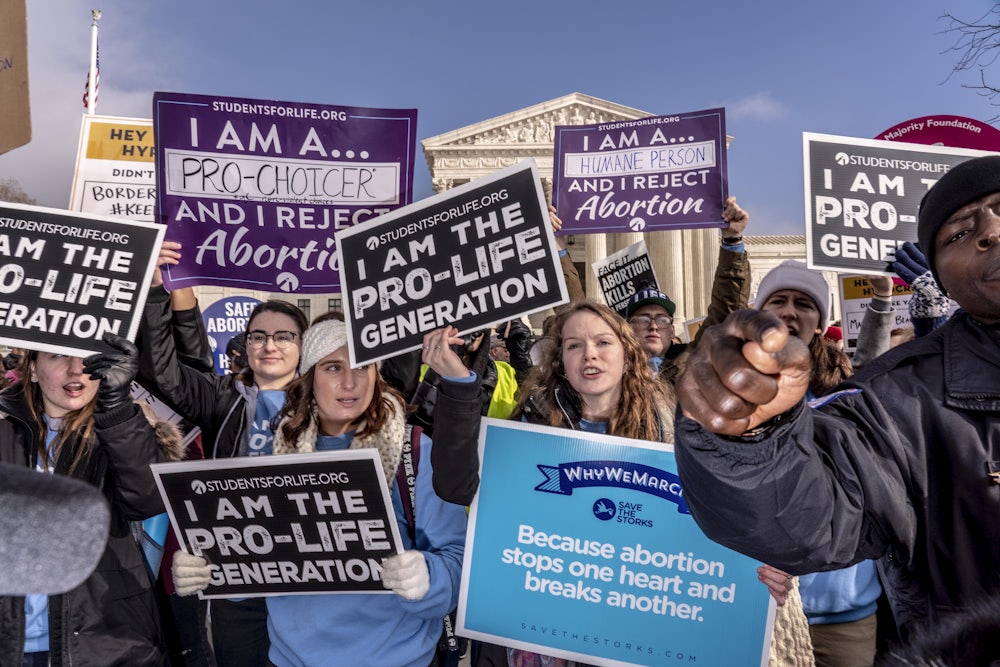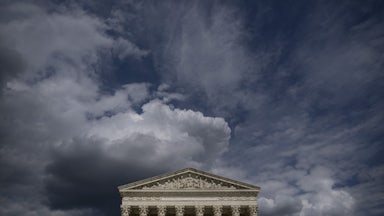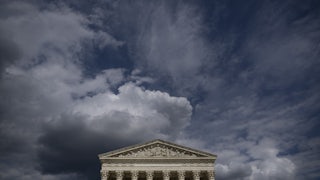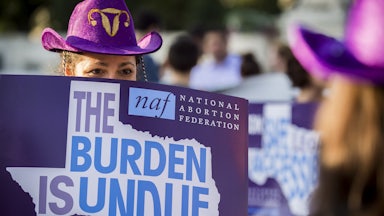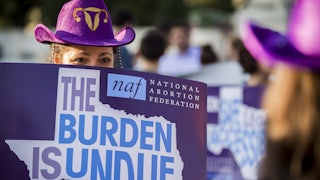The new Supreme Court term is about to begin, and it promises to be a blockbuster. With cases involving abortion and guns already on the docket, and the possibility that an affirmative action case may be added as well, this term will present the court’s new six-member conservative supermajority with the opportunity to usher in major shifts in the law. What the justices do with those opportunities will be a test of their commitment to precedent and, for many of them, their self-professed commitment to originalism.
Perhaps the biggest issue on the court’s docket this term will be abortion. A little over a year ago, in a case called June Medical Services LLC v. Russo, the Supreme Court gave abortion rights advocates a win when it held unconstitutional a Louisiana law that required physicians who perform abortions to have admitting privileges at a nearby hospital. In his opinion concurring in the ruling, with which he joined the court’s (then) four liberal members, Chief Justice John Roberts extolled the importance of precedent, observing that “for precedent to mean anything, the doctrine must give way only to a rationale that goes beyond whether the case was decided correctly.” Because the Louisiana law was identical to a Texas law the court had previously struck down, the chief justice voted to strike down the Louisiana law.
But with the replacement of Justice Ruth Bader Ginsburg by Justice Amy Coney Barrett, the chief justice’s vote will not be dispositive when the court hears Dobbs v. Jackson Women’s Health Organization this term. In Dobbs, the court will be considering a challenge to the constitutionality of a Mississippi law that, with limited exceptions, bans abortions after the fifteenth week of pregnancy. The lower courts rightly concluded that this pre-viability ban on abortion was unconstitutional under the Supreme Court’s precedents, and Mississippi now asks the court to overrule those precedents.
According to Monica Simpson, executive director of SisterSong, a Southern-based, national reproductive justice organization that works to improve policies that affect the reproductive lives of women of color, “If the Supreme Court decides to overturn ... precedent under Roe v. Wade, the consequences will be devastating for communities like mine in Georgia, where we are currently fighting against a six-week abortion ban in court.” As she further explained, “The right to access abortion care is a crucial aspect of bodily autonomy, which is too often denied to Black people and others from marginalized backgrounds.”
This case is a huge test for the court and its newest justices, all three of whom—Barrett, Brett Kavanaugh, and Neil Gorsuch—professed a commitment to precedent at their confirmation hearings. Repeatedly, the Supreme Court has been asked to overrule Roe, and repeatedly it has reaffirmed that decision. But in an ominous sign, the court, over the dissents of Chief Justice John Roberts and Justices Breyer, Sotomayor, and Kagan, recently refused an emergency request to block Texas’s six-week abortion ban from going into effect, thus functionally gutting Roe. In doing so, the court not only undermined the right to abortion, but also its own legitimacy. If the new conservative supermajority does, in fact, vote in Dobbs to fully jettison Roe and the other long-standing precedents that recognize a constitutional right to access abortion simply because they were not, in the views of those justices, “decided correctly,” it will deliver an even more significant blow not only to the right to abortion, but also to the legitimacy of the court.
It should also deliver a blow to the claims by many members of the court that they follow the text and history of the Constitution, wherever it leads. When the Reconstruction framers drafted the Fourteenth Amendment, they chose sweeping language to protect the full panoply of fundamental rights for all, and they viewed both personal liberty and control over one’s body as among those fundamental rights. The Fourteenth Amendment thus guarantees the right to access abortion, and the court’s originalists should recognize that.
Dobbs is not the only blockbuster case on the court’s docket. In New York State Rifle & Pistol Association Inc. v. Bruen, the court will be considering whether New York’s denial of two individuals’ applications for concealed-carry licenses for self-defense violates the Second Amendment. In 2008, in a case called District of Columbia v. Heller, the Supreme Court held that the Second Amendment protects an individual right to own guns for self-defense, but also made clear that “[l]ike most rights, the right secured by the Second Amendment is not unlimited.”
In the years since Heller, it has fallen to the lower courts to determine what gun regulations are constitutional, with very little guidance from the Supreme Court. The Second Circuit Court of Appeals concluded that the New York law was constitutional, explaining that because “our tradition so clearly indicates a substantial role for state regulation of the carrying of firearms in public, ... [the law] passes constitutional muster if it is substantially related to the achievement of an important governmental interest.” The circuit court went on to conclude that “New York has substantial, indeed compelling, governmental interests in public safety and crime prevention,” and the law is “substantially related” to those interests. When the Supreme Court decides Bruen, how it rules may ultimately be as important as what it rules, because the guidance it provides about how courts should decide the constitutionality of gun regulations could have ramifications that extend far beyond the New York law at issue in the case.
As if these two huge cases were not enough, the court may add another big issue to the docket before the term ends: affirmative action. And as in the abortion case, the court is being asked to overrule a long-standing precedent: Grutter v. Bollinger, the 2003 case that held that universities may consider race as a factor in admissions. In Students for Fair Admissions Inc. v. President & Fellows of Harvard College, an organization called Students for Fair Admissions sued Harvard under a federal law that prohibits entities that accept federal funds from discriminating on the basis of, among other factors, race. The lower courts rejected the challenge, concluding that Harvard’s “limited use of race in its admissions process in order to achieve diversity ... is consistent with the requirements of Supreme Court precedent.” The group challenging Harvard’s admissions policy has asked the court to hear the case, and the court has called for the views of the solicitor general.
Here, as in Dobbs, both constitutional text and history, as well as the court’s own precedent, require the same result—upholding the lower court decision. After all, at the same time the framers of the Fourteenth Amendment drafted that amendment, they also enacted a long list of race-conscious legislation designed to guarantee equality of opportunity for all persons regardless of race. The Supreme Court’s repeated rulings upholding universities’ use of race as one factor in admissions decisions are entirely consistent with that history. In other words, if the court ultimately decides to take up this case, it—no less than Dobbs—will be a real test of the justices’ commitment to the text and history of the Constitution, as well as to the court’s own precedent.
While those three cases are likely to dominate headlines about the court this term, they’re hardly the only important ones on the docket. The court will also be deciding, among many other matters, whether individuals can challenge conduct that has a disparate impact on the basis of disability, whether an important federal civil rights law allows plaintiffs to recover damages for emotional distress, and whether it is constitutional for a state to provide students with funding for private schools but prohibit them from attending schools that provide religious instruction.
Moreover, if past is prologue, the court’s merits docket will not be the only place where the court makes new law in the coming year. In recent years, the Supreme Court has been increasingly using its orders in response to emergency applications—what has been called its “shadow docket”—to make new law, even though those cases do not receive the full briefing, oral argument, and detailed written opinions that cases on its merits docket do. Last term, the court routinely used the shadow docket to mandate religious exemption to Covid regulations. This year, the court may consider major challenges to Biden administration policies as part of its shadow docket. In August, the court refused to put on hold a district court order requiring the Biden administration to try to reinstate a Trump-era policy that forces many people to wait in Mexico for their asylum hearings.
Whatever other issues the court tackles, one thing is for sure: This coming term is going to present a number of key tests for the court and its members. What they do in these cases will have huge implications for the American people—and for the legitimacy of the court itself.
